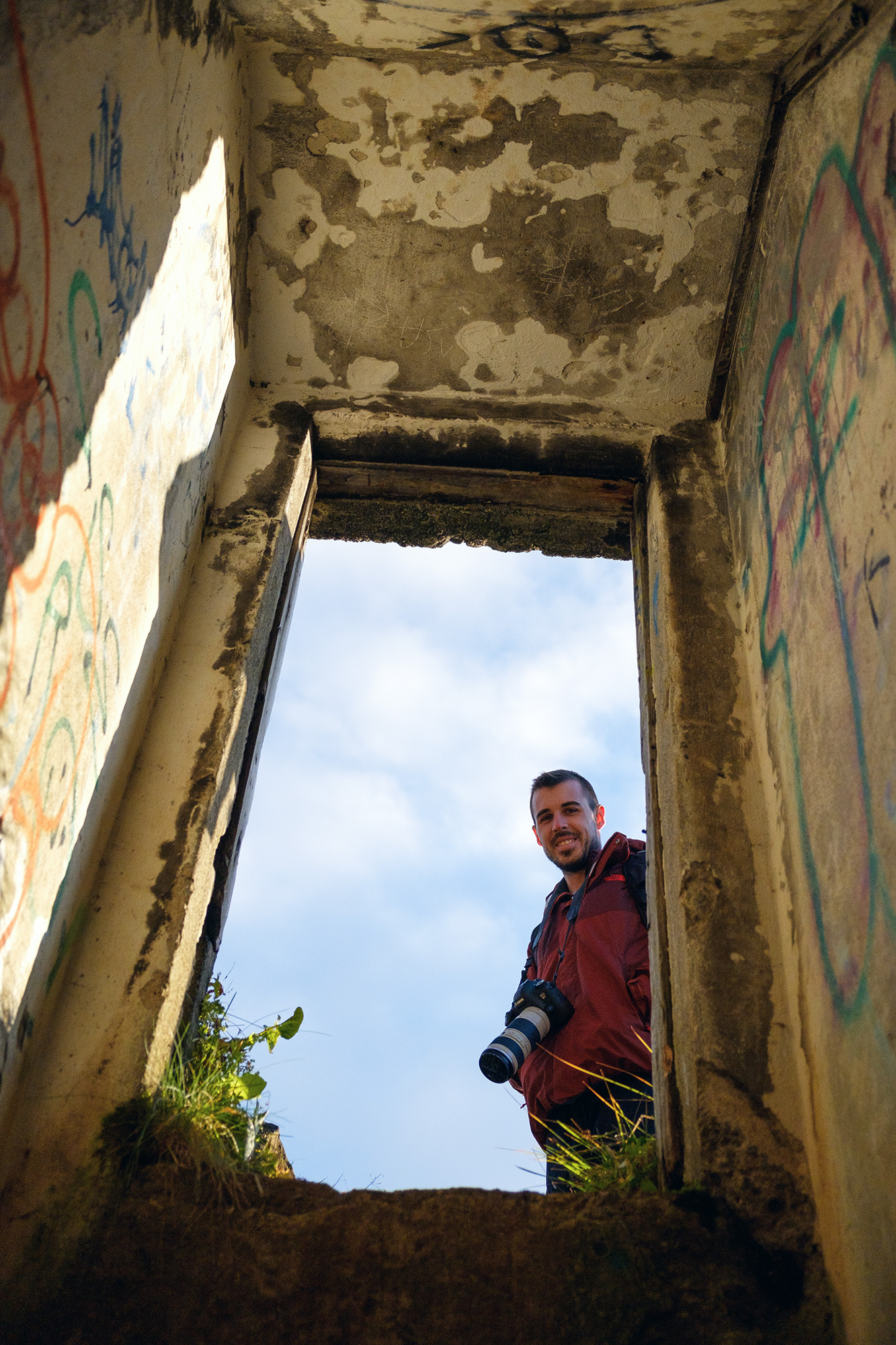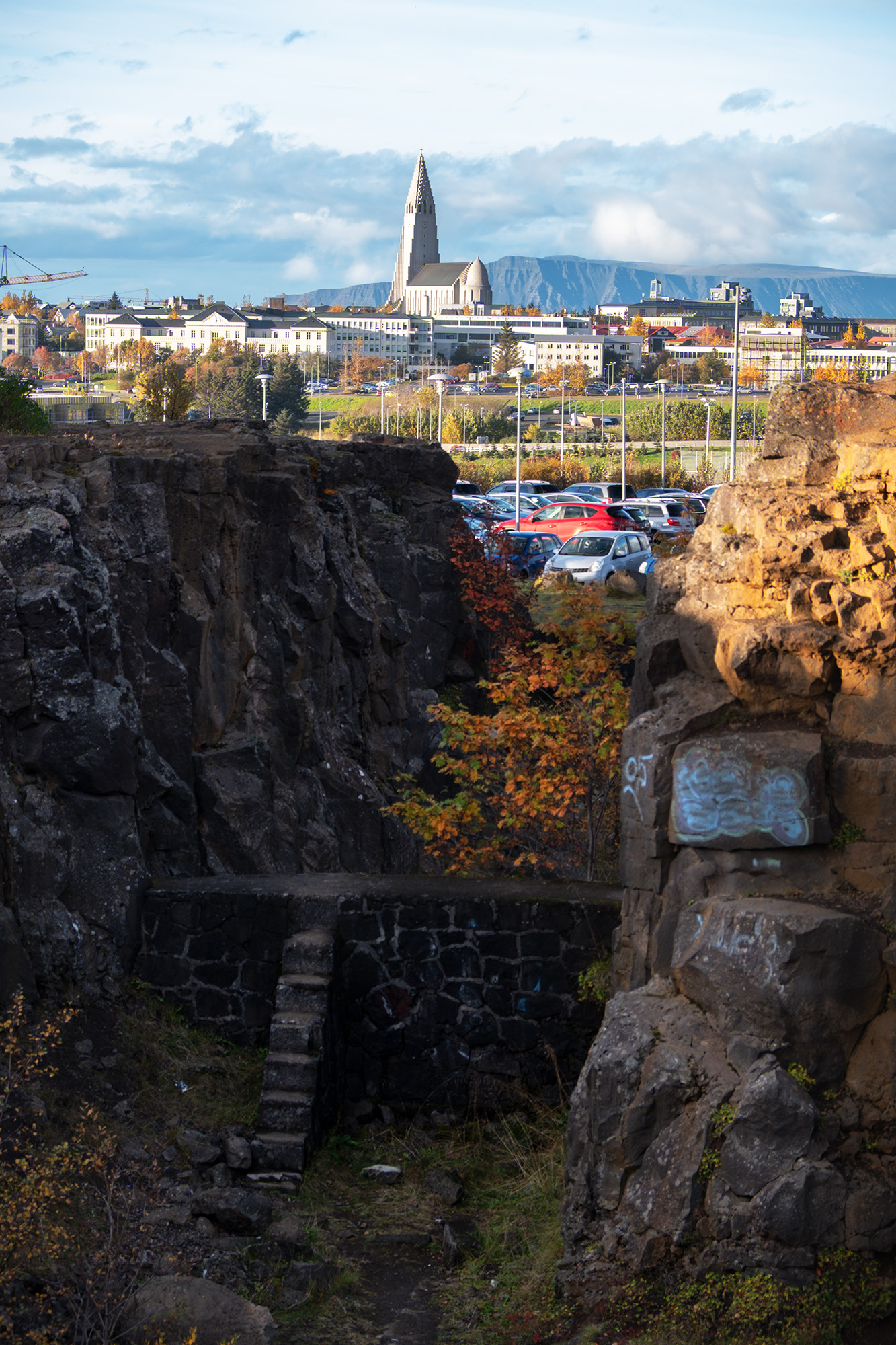ICELAND:Day 8
Return to Reykjavik (And a Fond Farewell)

Text by Manol Z. Manolov | Images by Manol Z. Manolov and Nikolay Bratovanov © 2017
The tide of time, as it always does, had caught up with man's endeavors once again. After a very eventful week in Iceland's southern abodes, we were now well aware that our journey was at its end. Our stay seemed so very short now and we knew that we were leaving behind so much more to be seen. But the last full day was ahead of us and we had already decided on how to make good use of it. Our first encounter with the capital city just the day previous had so impressed us that we had decided to spare time for one more outing. We were eager to see a few different vantage points, specifically the sights from the famous Perlan building, located right above the small Reykjavik Airport.
But first things first - as we were once again staying at our favorite Grindavik campsite, with the Brimketill lava pool lurking on the coast nearby, we decided to stop by for a look on the way to the "smoky bay". The weather was horrible and a bitterly cold wind was whipping the waters of the ocean into a spray that flew all over rock, tourist and camera alike. But we (read: Nikolay) were able to find a suitable spot to take a shot or two of the natural wonder:

On to Perlan and its lofty hill we continued. We weaved through sparse Reykjavik traffic and braved numerous roundabouts once again, finally making our way to the elevated location. As soon as we entered the large parking lot, modern Scandinavian sculptures assaulted our eyes:

But we could not disregard the fact that the background of the city and the water was rather scenic. It was a beautiful day once again. Considering that important fact, we decided to give the Perlan building the one-over from the outside first. We headed around the monstrosity, toward the way of the Reykjavik Airport below. The building, designed by Ingimundur Sveinsson and built in 1988 upon Öskjuhlíð (good luck with that one..) hill, is a photographer (well, an architectural photographer, anyway)'s dream: glossy, shiny windows and pleasing geometric shapes interweave into a silvery, shimmering combination of surfaces that looks stunning on a nicely-lit day. Too bad the meandering stairwells were off limits and an unsightly plastic 'barrier' marred the view:

The bulges surrounding and supporting the main building and its glass dome are exactly what they look like - water containers! In true Scandinavian fashion, practicality and function meet aesthetic appeal - six huge reservoirs, each with a 4 million liter capacity, hold geothermal hot water for the city's reserves:



The mirror-like windows were extremely photogenic and produced some interesting shots:

We kept circling and were reminded once more of that unique characteristic of Iceland's - that even the most ordinary things can look supremely interesting and photogenic:

It was time to head inside. We did not have any grand expectations for the indoor Perlan experience, especially since there was a summer-like Icelandic day in full-flight outside, but as proper tourists, it was our duty to document what the landmark building held within. For all intents and purposes, the thing looked like a mall with fancy windows and modern, asymmetrical design:
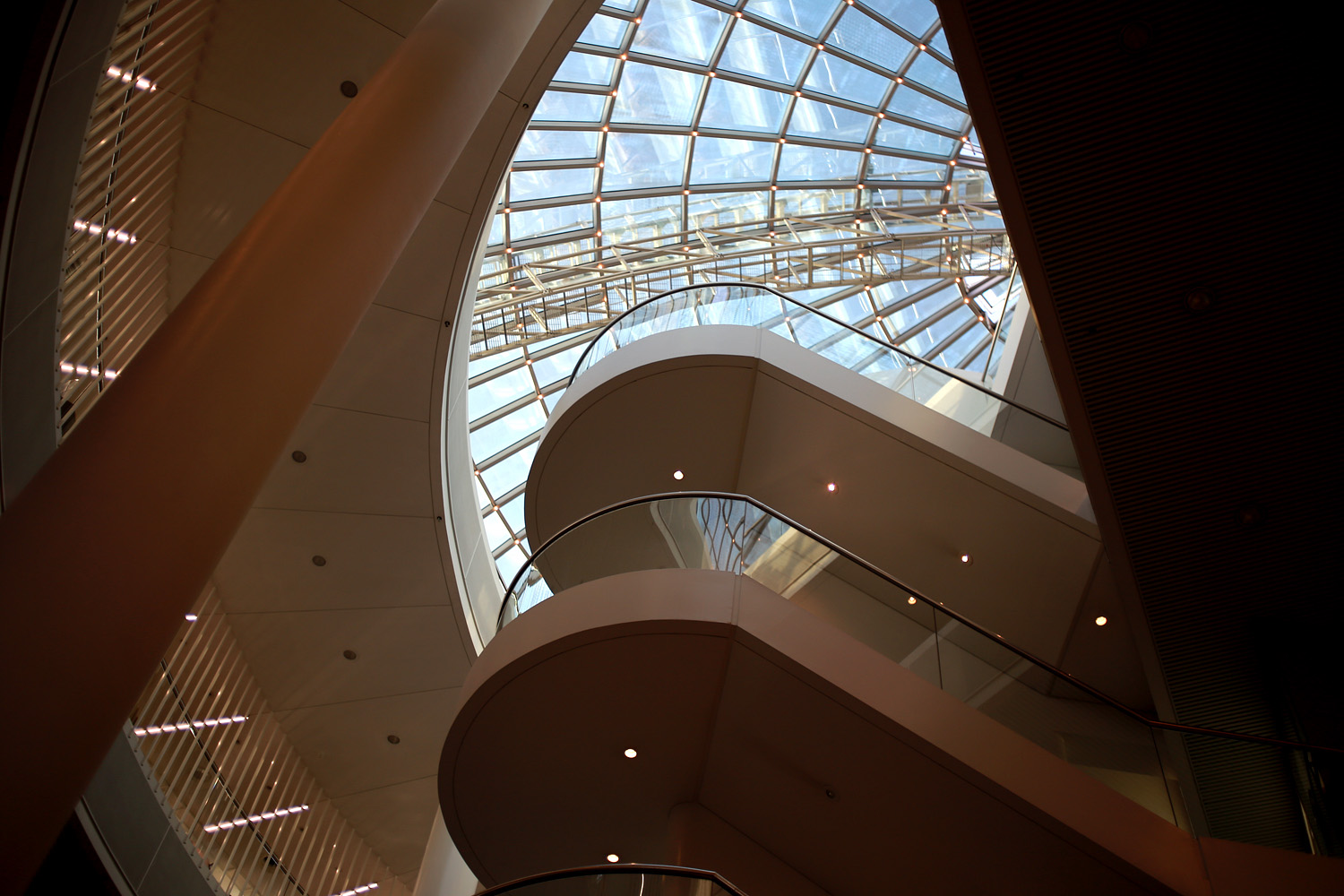
But oh, those windows...:

They were even prettier and more sci-fi-like from the inside! It felt like we had stepped into the matrix:

There was also a restaurant up top (with surprisingly "normal" prices), as well as a few exhibitions on the bottom level. A few areas were to be entered only upon payment, so we headed upstairs to check out the view.
What do you know - the viewing deck required money (surprise, surprise), so as cost-conscious Eastern European tourists, we duly decided to skip it. Others were not of the same mind and enjoyed the fruits of their hard-earned money:

Our trek up the stairs held a reward additional to the great workout we received - the sighting of this hairy Icelandic souvenir:
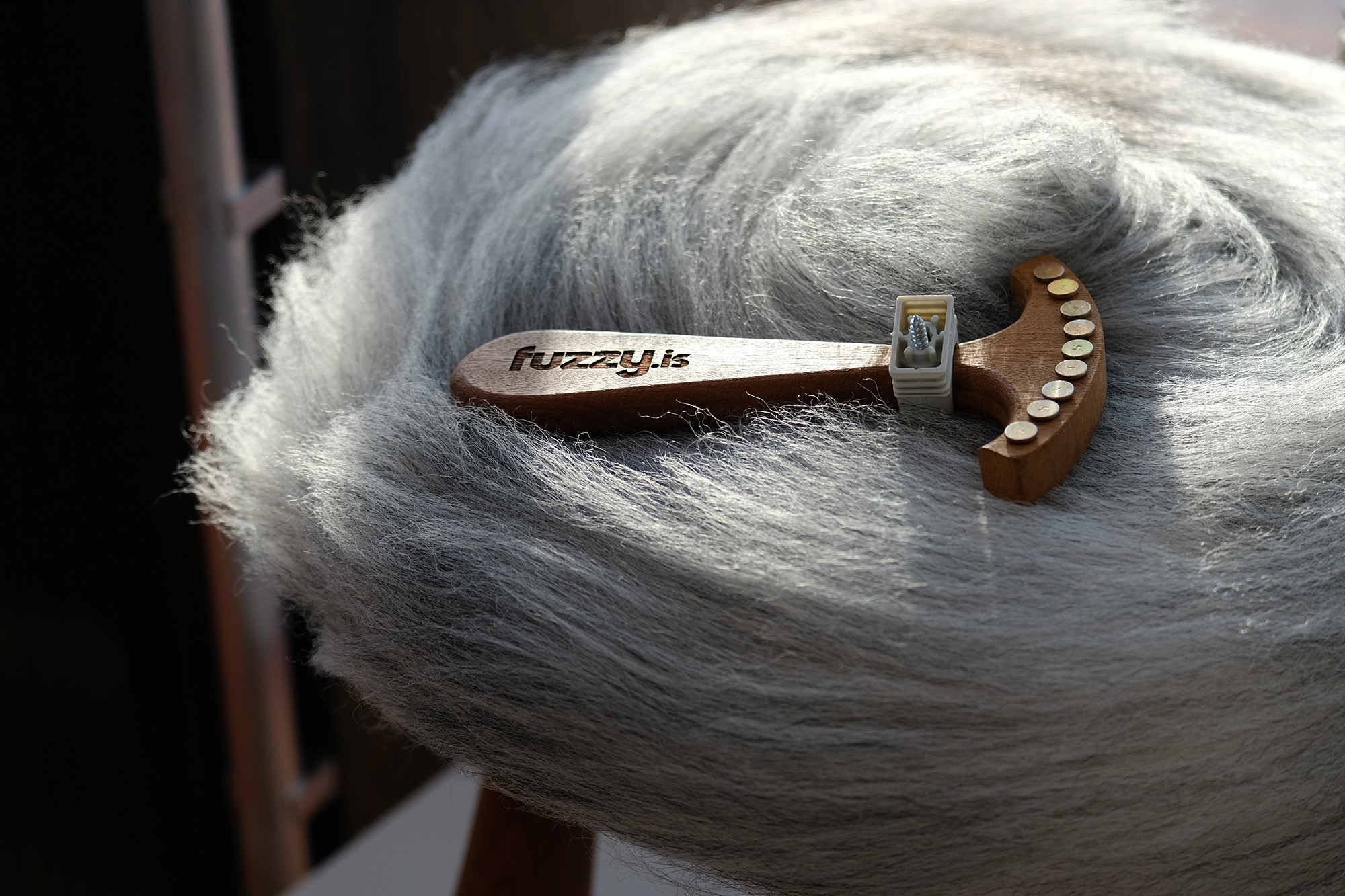
It looked like a chair...that you can brush...but neither of us could tell what it really was supposed to be. Fuzzy seemed like a fitting name, though.
At this point we were beginning to figure out that we were better off heading back outside and enjoying the view from the hill. It turns out we were right. The better experience was to be had right outside the Perlan fortress, in the lovely little park-like area. Its subdued winter hues inadvertently, almost subconsciously, reminded us of a summer day in one of our own Soviet bloc countries some decades ago:


The city, and the sea, lurked right in the background:

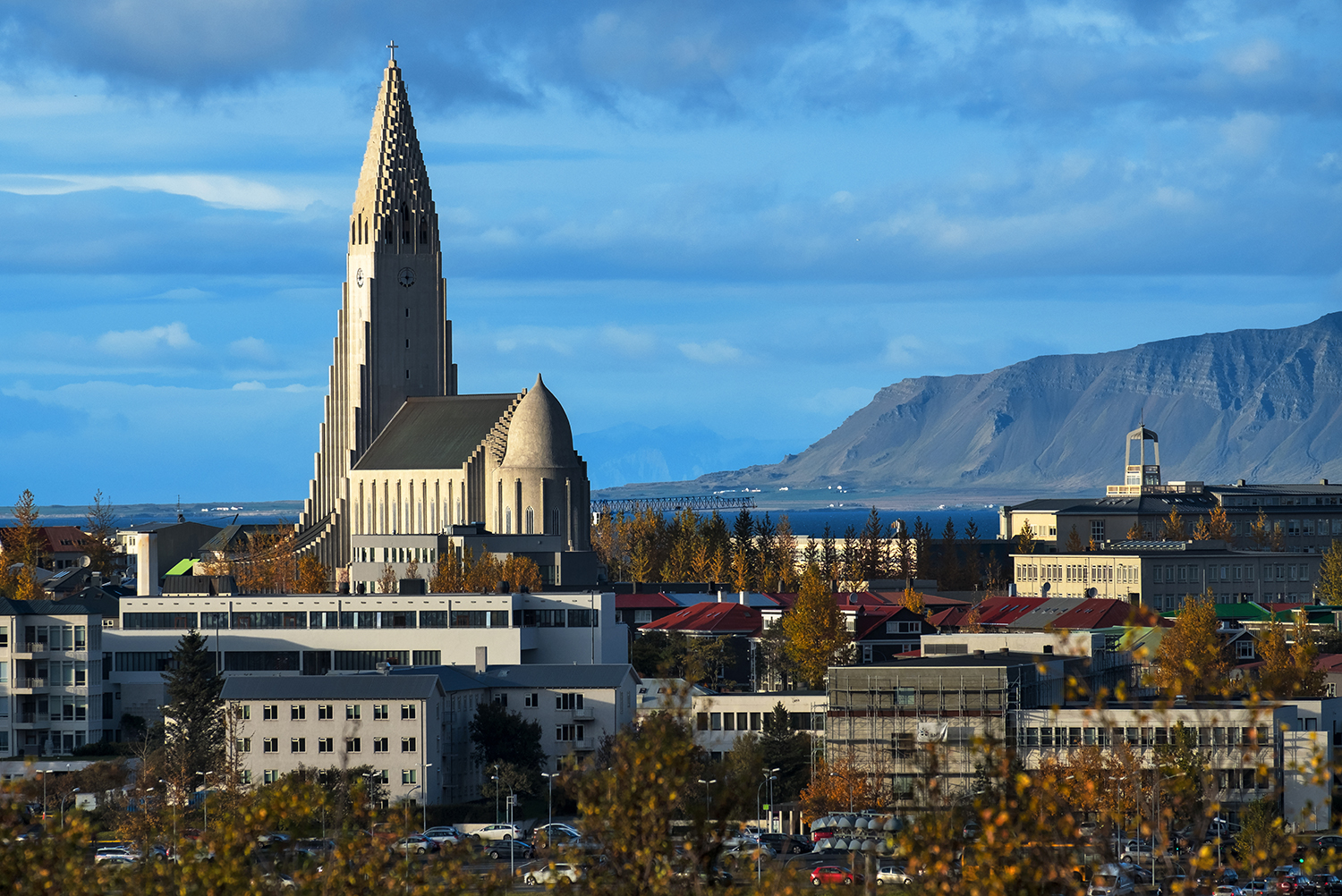
I had a feeling that a land that I had read about in kids’ books and novels from the Eastern Bloc era really did exist, and somehow, all of a sudden, we had found ourselves right in the middle of it:

"> I don’t know why, but in particular, although I had never visited, I imagined this is what a city in one of the Baltic countries might have looked like during socialist times of the recent European past. In general, the streets of Reykjavik, I thought, projected a vibe that seemed a mix of Eastern European, Scandinavian and Baltic – somewhat distinct from other Scandinavian cities I had been in.
The Reykjavik Airport, originally built by the British during World War II, was also located right beneath the hill. Still an active airport, it had seen use during the war and later served as Iceland's overseas and domestic hub. Eventually supplanted by the Keflavik airport right outside the capital, it still functions as an airport for smaller craft:
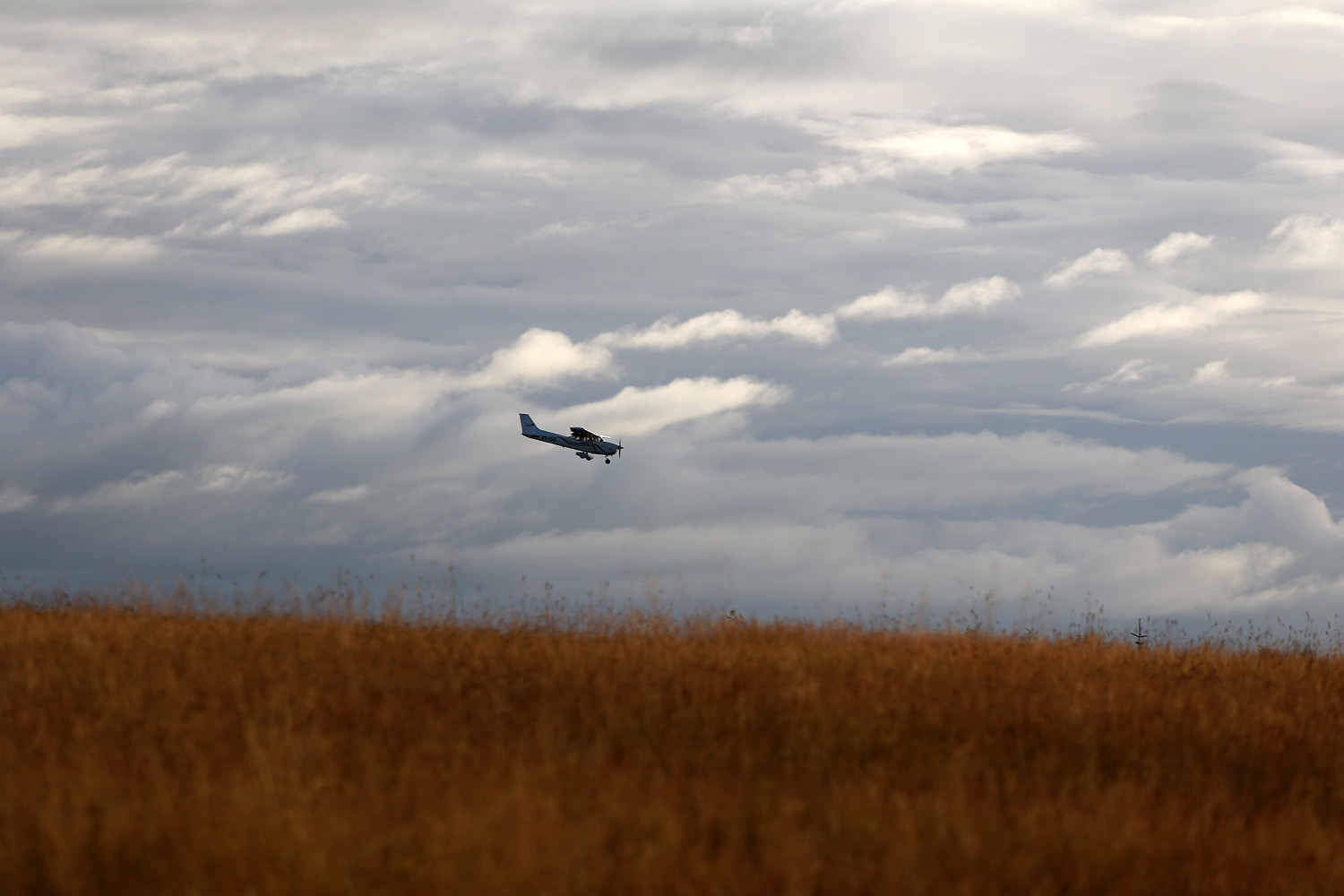

What we didn't know about was the additional leftover World War II stone. As we headed in the direction of the airport to see if we could get a better shot of the runways, we discovered what seemed like a bunker and pillbox network left over from the war. It looked like a combination of a war zone and a rock quarry - with the city planted directly behind it:

Surrounded by all of this, we probably spent a good hour wandering in the field, basking in the sunlight of the nice Icelandic afternoon and taking it all in with both camera and eye:

As we finally brought ourselves to circle the building once more to head back to the car, we noticed a commotion starting to brew. A barely perceptible agitated energy filled the air, and as the rain clouds gathered on the lovely summer-like day, suddenly people all around us broke into a run. The rush was accompanied by the even more sudden preparation of cameras, whipping out of mobile phones and selfie sticks and a raising of voices. Something was amiss, and it didn't take us long to realize what it was. Setting our eyes upon the direction of the mad dash, we at once gazed upon a multi-hued fire that had split the now gathering storm and painted the sky bright. What appeared to be on of the most magnificent rainbows both of us had ever beheld was illuminating the already-majestic Reykjavik cityscape below us. Iceland was sending us off with all of its best - a truly touching and magnificent spectacle to behold:

I can assure you, this was not the only picture we took of the spectacle, but we'll let it suffice and allow words and imagination fill in the rest. As this was not a sight to be spoiled by a plethora of touristy images - this was a show to behold with the eyes and the soul.
Aside from the memory for a lifetime, the rainbow sighting and the gazing upon the skyline for hours had instigated yet another desire: to find out just what building the four pointed black domes belonged to. As we entered the Dacia once more, we began a search for the location that had so punctuated the landscape, that even the rainbow itself had chosen to manifest right next to it.
It didn't take long - as it turns out, this was the Háteigskirkja church...which was closed. But what a building! The architecture impresses, especially through a wide lens:



But now, as time advanced mercilessly, reality was setting in once again. We had a very early flight to catch the next morning, and we needed to find a place to spend the last night before heading off the island of ice.
Contemplations of paying one last visit to our old haunt of Grindavik had arisen, but ultimately, we had decided to stick close to the Keflavik airport, to make our transition back to civilization easy. After all, we had to pack up and return our rental car before catching the 6am flight back to mainland Europe. With these considerations in mind, we pointed our Romanian SUV toward nearby Garður to spend our last night on Iceland's southwestern shores.
There was no one around in the gathering darkness, as we drove through the town, and the empty streets gave off a ghostly feeling. On our approach to the Garður campsite, right by the water, we could already tell that it was going to be a picturesque night. Sure enough, when we reached the end of the road and turned back to see where we had come from, an otherworldly scene revealed itself:

We thought that after the light display, the gorgeous day and the view we had enjoyed from Perlan's roundabouts, things could not get any more epic. But our host country had truly saved all the highlights for the last day. The rain had cleared now and only the vicious wind, a constant companion throughout our journey, remained. The light, however, was becoming increasingly beautiful and a shiny red and white object protruded from the nearby coast. As it turns out, Garður was a town of lighthouse fame, and now, not one, but two of them stood before us.
The new Garðskagi Lighthouse had taken over from the old one in 1944, when coast erosion threatened to make the old one unsafe. It now hovered grandly over us, its beacon piercing the slowly-darkening skies:

But the real attraction turned out to be the old Garðskagi Lighthouse. Built in 1897, a square concrete building that features attached quarters for the lighthouse keeper, it served the area and the surrounding seas as the first real lighthouse built on the Garðskaga peninsula. Proudly standing in the Icelandic sunset and turbulent weather fluctuations of the North, it now presented an amazing sight:
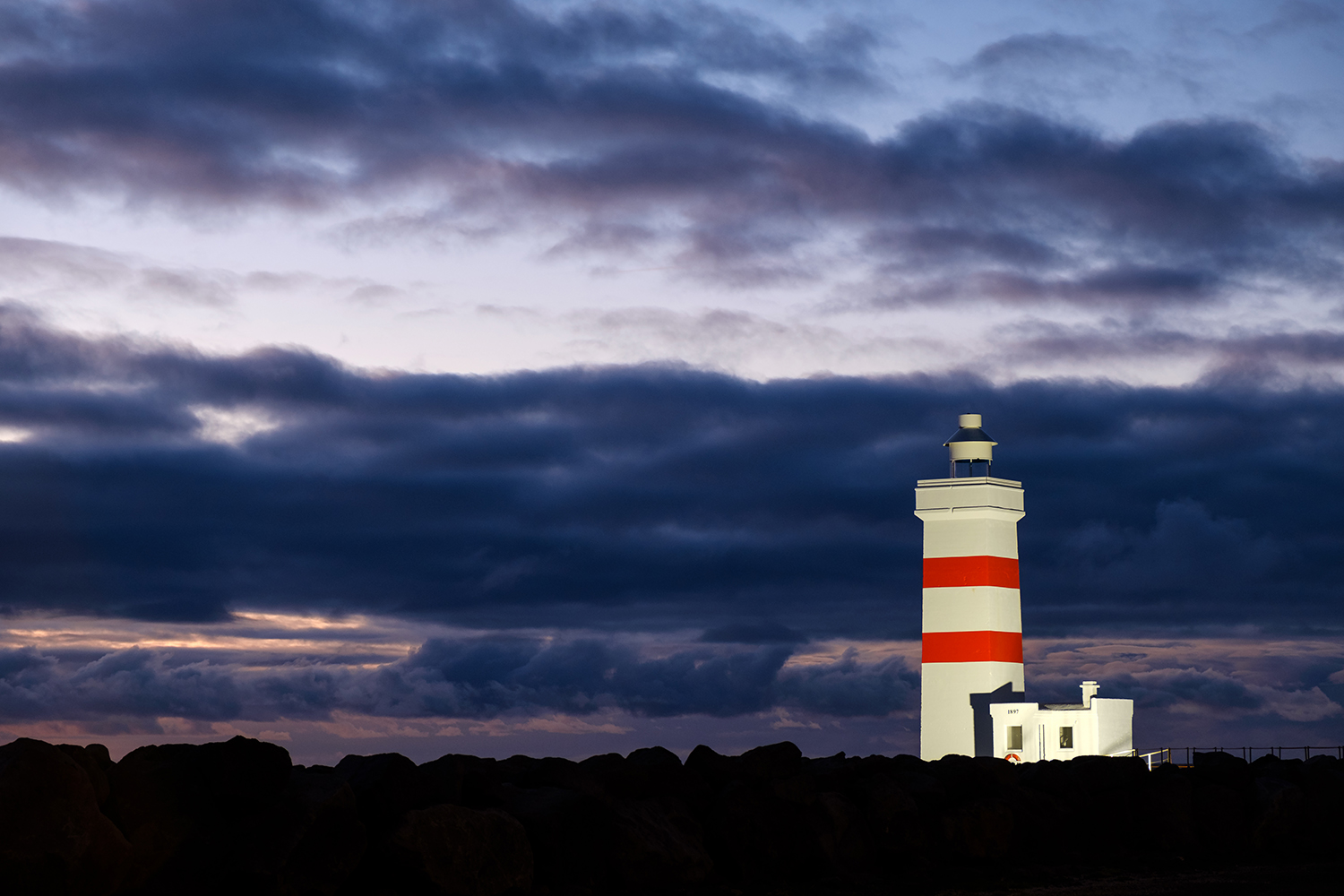
Surreal sights to behold. Sights that will surely always remain as a pleasant remembrance of the natural beauty of the Icelandic shores. And, as the most romantic moments often end in the most unromantic of fashions, the sublime spectacle of the Garður coast now had to be left behind, as it was way past our bedtime. An upcoming early morning wakeup, unpleasant suitcase organization and a return to the joys of airport existence forced our hand in retiring semi-early from our last night of scenery-gazing. It was now truly time to say goodbye. Iceland, our gracious host for the past eight days was bidding us adieu.
Our last morning commenced at 4am, with a ritual packing of suitcases – now everything had to go back in for the flight. It continued with a flashlight inspection of the Dacia (any damage would cost us dearly, and we had already paid enough) in brutal winds and tiny, piercing drops of rain. Finally, it concluded with a changing of clothes at the airport shuttle stop, in order to save time, as somehow, we had managed to be on the verge of running late, even with the early rise. Once checked in, we could at last relax a bit more and contemplate the comfort of the apartment in Budapest, which was to be our home for the next week and the blissful waters of the Széchenyi baths, a welcome pleasure after the cold and wind we had endured.
We were grateful for what we had seen and experienced in Iceland – it was, naturally, not always what we expected it to be, but also, in many ways the trip had surpassed our expectations. Interestingly enough, though we had been sleeping in a car for the past week and were quite tired and in need of real food for a change, we found ourselves sad to leave. We wished we had more time to enjoy the beauties of this charming island.
But, until we get the chance to explore again, our Icelandic endeavors will always live on as a bank of memories for a lifetime.
Bless!























